
The company's new small car, to be launched in 2011, will provide the company a much-needed second pillar of business after the City.
Honda recently shipped saris from India to its factories in Japan. No, sari weavers need not brace themselves for competition from Japan. These were meant for local Japanese women to wear.
Clad in saris, they got in and out of a small hatchback a number of times, while a team of designers and engineers keenly observed them.
They wanted to check if Indian women can enter the car comfortably? Is the height right for them? Should the door be redesigned?
Honda is readying a new small car. Though it will be sold across all continents, its principal market will be India. And the world's sixth-largest car maker wants to leave nothing to chance.
The fabric on the doors, for example, will be different from the one on the seat, though they will look alike.
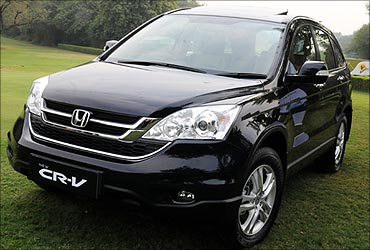
This is because for over ten months in a year, Indians wear short sleeves. As the elbow touches the door, its lining has to give more comfort to the skin.
The air-conditioner will be a notch or two stronger because of the scorching heat in the country.
Though it is a mass-market brand in most countries, Honda's market share in India is small -- just around 4 per cent.
If Honda wants to play the volumes game here, it needs a small car in its product portfolio desperately. Without it, Honda has no presence in 82 per cent of the market.
At the moment, the City accounts for 70 per cent of Honda's sales in India. Nowhere else in the world does a single car have such a huge share of its business!
This makes the need for a small car all the more acute. Honda needs a second pillar of business after the City.
Honda plans to make it big with its small car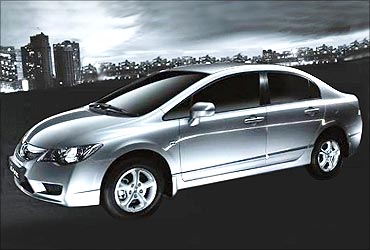
Though Honda makes the Zest and Life (called Kei cars) in Japan, the need was felt for a brand new car for India.
The new car, which was showcased at the recent Auto Expo in New Delhi, is yet to be named. It will be launched towards the end of 2011.
To qualify as a small car, and thereby get excise duty concessions, it will be less than 4 metres in length and will have a 1,200-cc engine.
It will be the biggest initiative from Honda in India. If it succeeds, the small car could be a game changer.
If it doesn't, it will set Honda back by several years. The stakes are huge. Here's how Honda has gone about it.
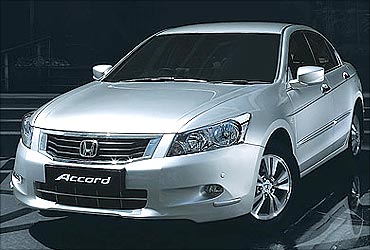
A car for all
Way back in 2007, Honda put together a survey and product planning team with executives from both Japan and India to observe consumer behaviour.
It visited homes of people to understand how they live, how they use their car, what are their driving habits, how many people do they seat in their cars, how do they park, what do they put in the luggage space, and so on.
The first learning was that virtually every car in the country is a family car.
This insight has been used in the design of the car. Family cars need space.
Thus, the small car would have to be a comfortable 5-seater. For some time now, Honda has begun to move towards the concept of 'man maximum, machine minimum'.
So, this fit in well with the brief for the small car.
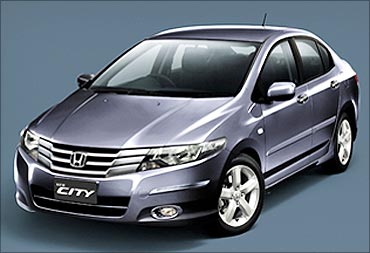
This had to be integrated with what customers expect from Honda. Surveys showed these were high durability, quality and reliability; contemporary style; and safety.
Thus, the small car will have airbags, ABS and G-CON body standards which keep the integrity of the passenger cabin intact in an accident.
An added feature will be pedestrian safety. In case of a hit, the bonnet and wiper will come down and reduce the injury to the pedestrian.
The question is, are Indians ready to pay extra for safety? Honda Vice-president (marketing) Jnaneswar Sen says they are. "We surveyed 1,600 people during the recent Auto Expo on what they want from the new car. I can tell you that safety is not down the order."
The second learning was that almost every customer looks for value for money in his car.

"This will be the cheapest Honda anywhere in the world," says Honda director (marketing) Tatsuya Natsume.
So, it will likely compete with bestsellers like the Maruti Suzuki Swift and Hyundai i20. Fuel efficiency will be high, like with the City.
Is the price good enough? In his defence, Natsume says there has been a shift in the profile of the Indian customers in the last few years.
"Price-conscious buyers have become value-conscious buyers. We can talk to such customers," says he. "Entry-level cars were 60 per cent of the market 12 years ago. Today, they are just 25 per cent."
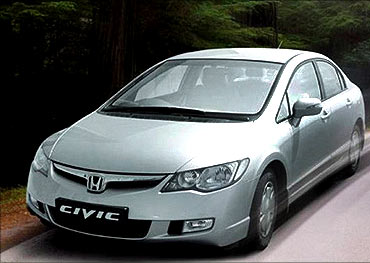
To keep the cost of spares down, the small car will have over 80 per cent local components.
Also, the car will be made in India and Thailand. There is a free-trade agreement between the two countries.
This will help Honda import free of duty those parts which Thailand produces at a lesser price.
"The cost of Honda spares," says Sen, "is higher than rivals but they require fewer replacements. So, over a lifetime, a Honda customer spends less on spares and maintenance."
A Honda also fetches best value in resale, claims Sen. According to him, while other brands depreciate 50 per cent in three years, a Honda depreciates just 30 per cent.
To sell the small car, Honda will first approach its 400,000 or so existing customers in the country.

"They can be our initial target. They know our quality and service standards. There are no mental barriers here," says Natsume.
For others, Honda will communicate through the mass media. This will be a new turn in the story: Honda has so far stayed away from the mass media because it addressed a small section of the market.
The communication is yet to be devised, but Natsume discloses that it will focus on "what Honda means". "Honda is an aspirational brand in India," says he.
All told, Natsume hopes to sell 50,000 small cars in the first year itself. This could take Honda's market share from 4 per cent to around 7 per cent.
Honda's factory at Greater Noida can produce up to 100,000 cars per annum, and is running at 65 per cent now.
When it runs out of capacity there, Honda plans to start production near Alwar in Rajasthan. The sheds are ready. Honda produces components there, and, claims Natsume, can start rolling out cars at short notice.

Foolproof plan?
In spite of the grand plans, sceptics say it won't be a cakewalk for Honda. They point to the Jazz, the last hatchback from Honda, which sells as little as 500 a month.
(Overall car sales in January, to put it in context, were of the order of 146,000.) The price -- Rs 698,000, ex-showroom, New Delhi -- was totally out of whack, they say.
Sen admits that the conversion ratio (purchases divided by enquiries) for the Jazz is 12.5 per cent, which is way below the industry average of 25 per cent.
But the sales have met the target, says he.
Though it was built on the City platform and shares 70 per cent of its components, the price of the Jazz was high because of the reinforced hatch, which caused the rest of the body also to be beefed up.
As Honda has decided against selling any car at a loss, it could not price it lower. "However, it has given us a foothold in the hatchback market. People now know that we too can make hatchbacks," adds Sen.
Still others say it will be too late by the time Honda enters the small car market. There are strong incumbents like Maruti Suzuki, Hyundai and Tata Motors. General Motors has come out with the Beat.
Next are the Volkswagen Polo and the Ford Figo. Before Honda, Toyota will have launched the Etios. Where does that leave Honda?
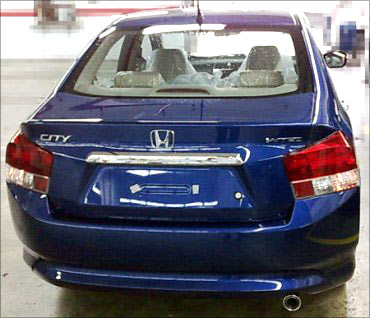
Sen, on his part, believes growth possibilities are huge. "It's still a small market, given the size of our population," says he. "We haven't hit the inflexion point. We should be there in another few years."
That may be fine, but rivals insist there is a huge entry barrier -- the service networks of Maruti Suzuki and Hyundai.
Aware of this challenge, Honda wants to ramp up its dealer network fast, especially in smaller towns, to be able to sell the car in large numbers.
From 114 dealers in 67 cities, it plans to expand to 150 dealers in 85 cities in three years. Sen reckons this will cover up to 80 per cent of the market.
Honda, of course, will need to push cars aggressively through these new dealers. As there aren't too many Hondas in small towns, the dealers cannot rely on service and spares for support.
Also, existing Honda dealers will have to learn to talk to a whole new set of customers when the small car is launched.
The existing dealers, says Sen, will be retrained to handle higher volumes of customers of a new profile, who will in all probability come from lower socio-economic groups than existing customers.
Observers also feel that the recent recall of over 8,000 Citys has dented the image of Honda in the country.
Sen says the recall hasn't impacted sales at all. "If you do a recall proactively, that doesn't affect your image. But if you wait for a problem to happen, then it's a different matter," says he.
Recalls of the Honda Accord and CRV in 2007 had no effect on sales, he claims. Car buyers, experience tells us, do not have a long memory.